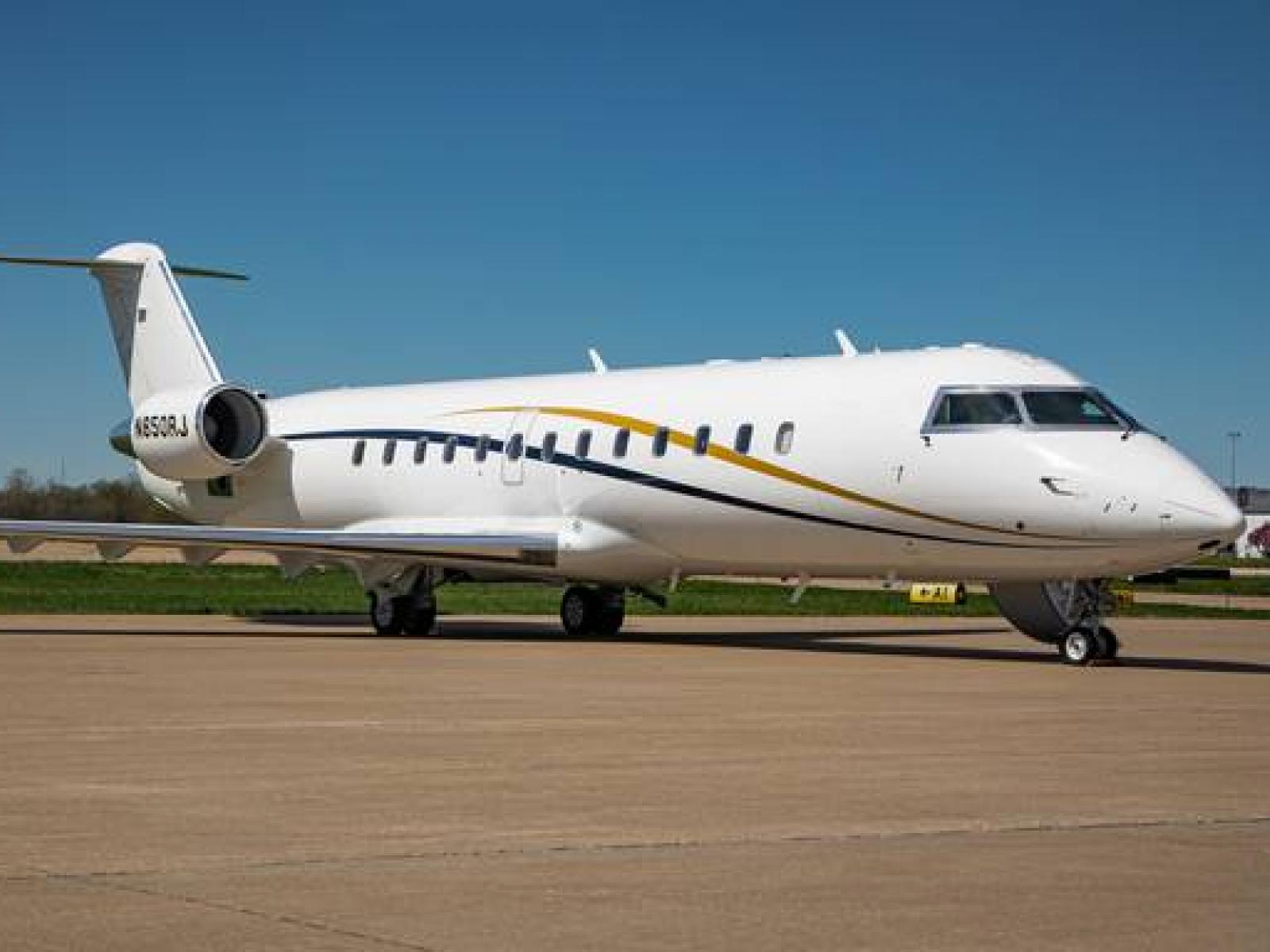With New Jet, PNNL will take Research to New Heights
PNNL continues its legacy of operating research aircraft on behalf of the DOE. These modified planes are outfitted for scientific data gathering.

When you think of research equipment at a national laboratory, you might imagine powerful microscopes, sophisticated spectrometers and room-sized supercomputers.
At the Department of Energy’s Pacific Northwest National Laboratory, you will find all these, as well as something you might not expect – a research aircraft. In fact, PNNL has operated several airplanes over five decades for various sponsors, primarily DOE’s Office of Science.
These are not your typical commuter props or corporate jets—although they start out as such. Each is modified for scientific data gathering. The exterior is adorned with sensors and its cabin is packed with scientific instrumentation.
As part of DOE’s Atmospheric Radiation Measurement (ARM) user facility, the aircraft have been operated for the global research community, along with three fixed ground-based atmospheric observatories and three mobile ones. Scientists propose projects that use the airborne scientific platform to collect atmospheric and weather data as it flies. This data is used to advance our understanding of the Earth system and to improve global climate models.
From its first mission in 1988 studying acid rain near Champaign, Ill., until its last, when it collected data in Argentina to better understand storm environments, the most recent aircraft – a Grumman Gulfstream I – completed a variety of campaigns before its final return to the Tri-Cities Airport last year.
During its swan’s song, it spent six weeks flying over an Argentinean hotspot for storms as part of the Cloud, Aerosol, and Complex Terrain Interactions campaign, known as CACTI. Researchers will use those measurements, along with data from ground-based instruments, to learn how clouds impact the formation, growth and effects of storms. Ultimately, these data could lead to more accurate representation of storms in weather forecasts and Earth system models.

From its first mission in 1988 studying acid rain near Champaign, Ill., until its last, when it collected data in Argentina to better understand storm environments, the most recent aircraft – a Grumman Gulfstream I – completed a variety of campaigns before its final return to the Tri-Cities Airport last year.
During its swan’s song, it spent six weeks flying over an Argentinean hotspot for storms as part of the Cloud, Aerosol, and Complex Terrain Interactions campaign, known as CACTI. Researchers will use those measurements, along with data from ground-based instruments, to learn how clouds impact the formation, growth and effects of storms. Ultimately, these data could lead to more accurate representation of storms in weather forecasts and Earth system models.
While CACTI’s lead scientist was from PNNL, these field campaign leaders often are not. PNNL’s primary role centers on stewarding this unique research capability for ARM.
PNNL staff fly and maintain the plane, plan its missions, and coordinate logistics to get the aircraft on location, including working with customs officials and obtaining necessary approvals. Our researchers help design the experiments; assemble and install the instrumentation; and operate, maintain, calibrate and perform data analyses for most of the instruments. In short, PNNL’s expertise is critical to all aspects of this important research.
PNNL’s atmospheric scientists are among the more than 1,000 users from around the world that access ARM data for their own research. In one project, PNNL researchers used airborne data from the Green Ocean Amazon field campaign to understand how urban pollution evolves and affects the Amazon rainforest.

Our scientists collected and analyzed measurements of the chemical composition, sources and evolution of tiny particles in the air called aerosols, gathering data within and outside the urban plume emanating from Manaus, Brazil, as it moved into the Amazon.
Over the years, PNNL has taken research aircraft from the Arctic to the tropics, from California to Kuwait. Flights also have enabled scientists to study the effects of historical events, including ash from Mt. St. Helens and fall-out in the Northwest from the Chernobyl nuclear accident.
DOE just purchased its newest plane, a pre-owned corporate jet, and PNNL staff are leading efforts to instrument it for future research.
The larger and faster Bombardier Challenger 850 will enable researchers to measure clouds at higher altitudes over longer flight times and with more instruments in a bigger payload.
In partnership with DOE, the Port of Pasco, and state and county economic development organizations, a larger hangar is being constructed at the Tri-Cities Airport for the new plane. The ArcticShark – an unmanned aerial system designed to collect sophisticated atmospheric data – also will be housed there.
Socrates once said, “Man must rise above the Earth – to the top of the atmosphere and beyond – for only thus will he fully understand the world in which he lives.” More than 2,000 years later, PNNL is helping make that happen.

Published: June 24, 2019